JMU Botanist McMullen Is Participant In Spanish Research In Galapagos
News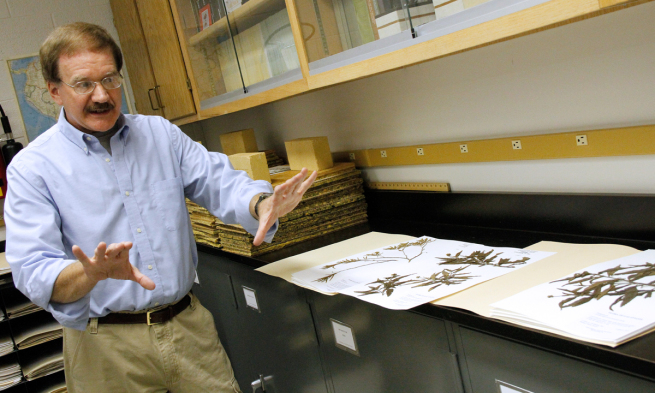
By Eric Gorton, JMU Public Affairs
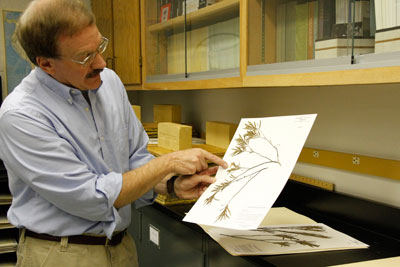
Watching insects visit flowering plants for weeks at a time, day and night, can be—in the words of JMU Associate Biology Professor Conley K. McMullen—"really boring."
Even when making the observations in a scientist's mecca like the Galapagos Islands, the task can get somewhat tedious.
At other times, though, "it's kind of exciting," says McMullen, who describes one episode reminiscent of an adventure movie scene: "There's this huge boulder these people were standing on to be able to get to the plants they were observing and they had been doing that for two days. Well, then the third day was my opportunity to do it. I hop up on the boulder, I wasn't on that thing for more than two minutes and the entire boulder collapses down into this ravine and I literally had to jump to the side to keep from going down in there. And it's like they were laughing and saying how I needed to cut back on the weight, which I have now, but it is just an exciting place to work."
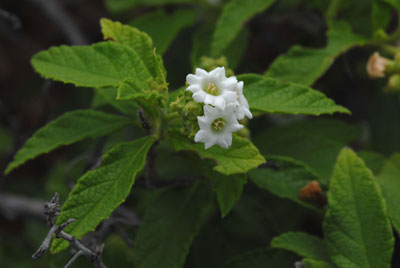
Leaping from falling boulders accounts for a very small part of what excites McMullen about botanical research. Guiding student research, preserving endangered species and searching for new species routinely provide the thrills. Just last February, McMullen was asked to be both a consultant and a co-researcher with a group of international scientists who want to determine if non-native plants in the Galapagos, mainly brought by people, are competing with native plants for pollinators.
"This will involve a lot of observations of pollination, or pollinator activity, breeding studies perhaps, and basically compare these and see if that's a major problem or not," says McMullen, who made his first trip to the Galapagos as a graduate student in 1983. On that first trip, the number of known, introduced plants to the archipelago was about 170. Now, the number is closer to 900.
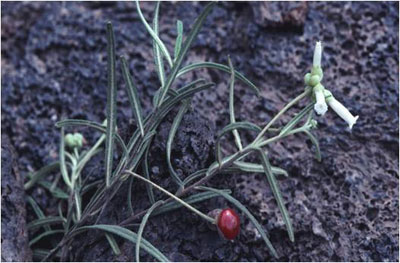
"Part of that increase in number of recorded introduced plants is we're making better collections, we're learning more about what's there already, but part of it's also, with more people coming in and more tourists, more residents, more plants are being brought in. Most of those aren't aggressive and most of those won't hurt the local plants, but some of them are very aggressive. For example, elephant grass, the quinine tree, and a raspberry species are taking over parts of the highlands on a few islands. Those are some of the problem plants. And so it's an interesting project."
Interesting too, McMullen says, is that the approximately $500,000 in funding for the three-year project is coming from a Spanish bank (Fundacà on BBVA) that wants to foster research between universities in Spain and Latin America. Since the Galapagos are part of Ecuador, the project was eligible for the grant, he said. The other primary researchers are from Madrid, Majorca, the Canary Islands and Denmark. One of those researchers knew McMullen from a previous project and asked him to join the group.
"We're all doing different parts of the study. Probably what I will do more of, my part, will be pollination or breeding studies where you do tests to see if the plants are able to self-pollinate or if they do require a pollinator of some type, and if they do, what type is it and does it seem to be attracted to introduced plants in addition to the endemics. Then you quantify all of that and see if there is a problem, and we are finding in some cases there is a problem. And then you have to decide what to do, of course. There are campaigns to wipe out the most aggressive or damaging introduced plants."
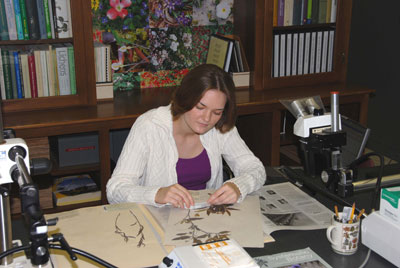
McMullen plans on making another trip to the Galapagos to work on the project in February 2011 and he hopes he can take JMU graduate student Julia Stutzman with him. Stutzman is working on a revision of the plant genus Cordia and has never been to the Galapagos. While there are perhaps 300 Cordia species around the world, current literature states there are four Cordia species found only in the Galapagos. McMullen, who published Flowering Plants of the Galapagos in 1999, isn't convinced the identifications are accurate.
"One of them is obviously different from everything else, so we would agree that there are at least two species," he says. "But these other things they say are divided into three species, you really can't tell what they are. And that's what Julia's project is, to study all of these plants that have been collected and determine whether they should be considered different species and if so, how many. It's possible we could say 'no', this is all just a very variable single species or we might say it's just two species or we might agree it's three or we might actually have to say there are four."
In addition to clarifying the number of Cordia species, the research is important for conservation. "If you don't even know what a species is, you can't conserve it," McMullen says. "The plants we're working on have been declared data-deficient, so we can't tell if they're endangered or not."
So far, all of Stutzman's research has involved examining specimens in McMullen's Burruss Hall herbarium. "I don't really know what I will find yet," she said. "But for me, that's part of the reward of research. You do a lot of experiments, observations, etc., and once you've put in the time, you can get some pretty neat results. It makes all the work pay off."
The specimens she's working with include some collected by Charles Darwin in 1835.
"What you have to do when doing a revision like this is ask all the major herbaria to send you their samples," McMullen said. The Darwin specimens are on loan from Kew Gardens near London. Cambridge University will not loan its Darwin collection, so McMullen says he will eventually have to make a trip there to see them.
Stutzman could complete her study and become an expert in the species without ever setting foot in the Galapagos, but McMullen hopes that doesn't happen. "I'm thinking I have to get her down there at least once," he says. He hopes she can go as an assistant on the Spanish research project.
Stutzman, who will write her thesis in the spring and graduate next May, also is hoping to make the tirp. "I would love to go to the Galapaos Islands," she said.
McMullen has taken students to the Galapagos before, including two who spent several weeks there in 2007. Those students collected some of the specimens that Stutzman is studying. Stutzman's work involves taking lots of measurements that will be fed into a computer program, PAUP. The computer will help figure out if there is enough variation in the plants to consider them different species.
"What the book, what the Flora of the Galapagos uses as the defining characteristics of these different species is the types of hairs on the leaves and its just very confusing and plus you can't really see the hairs anyway in the field," McMullen says. "So we're trying to come up with a better system to determine what sort of species are there."
All while trying to avoid the occasional collapsing boulder.
